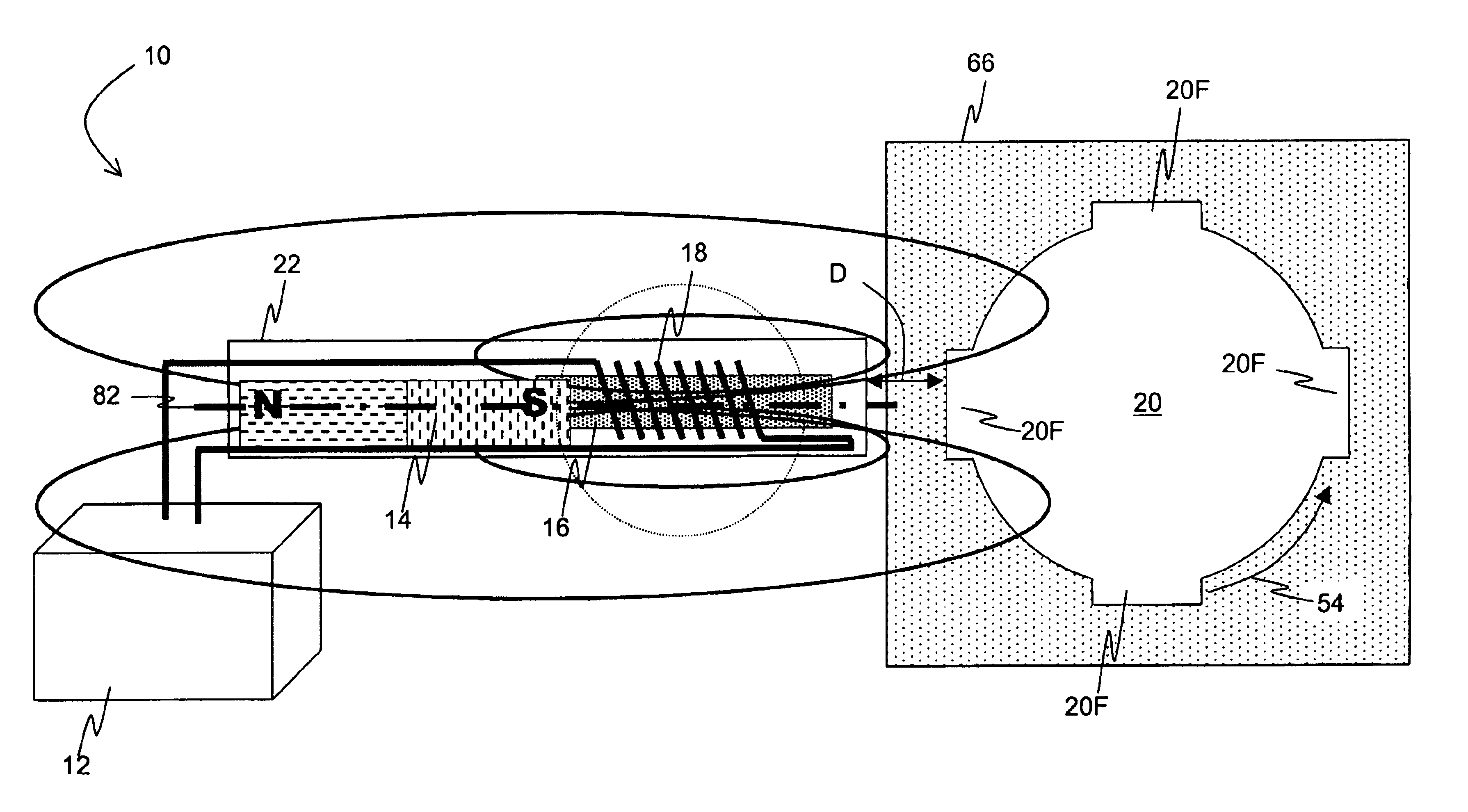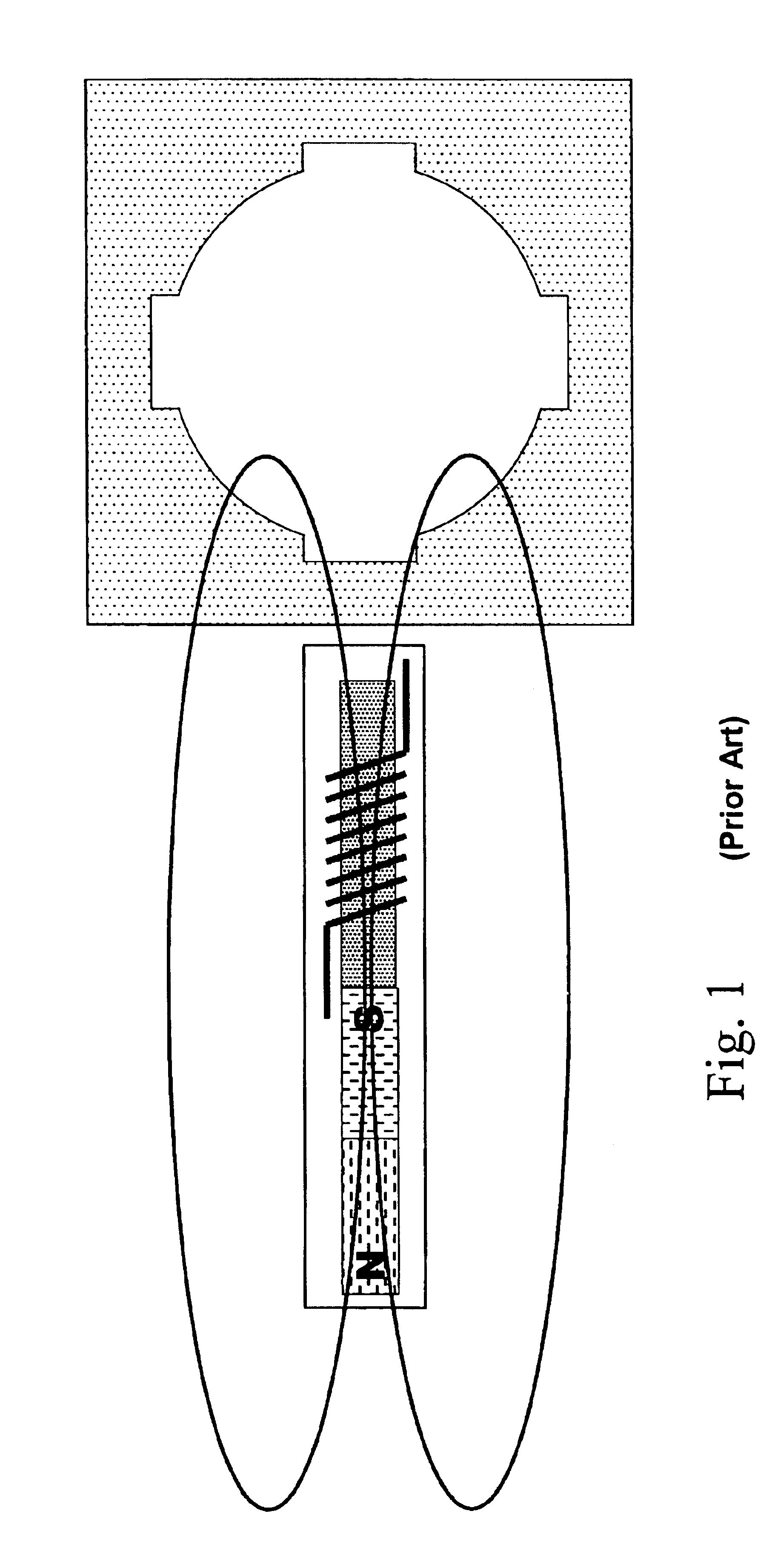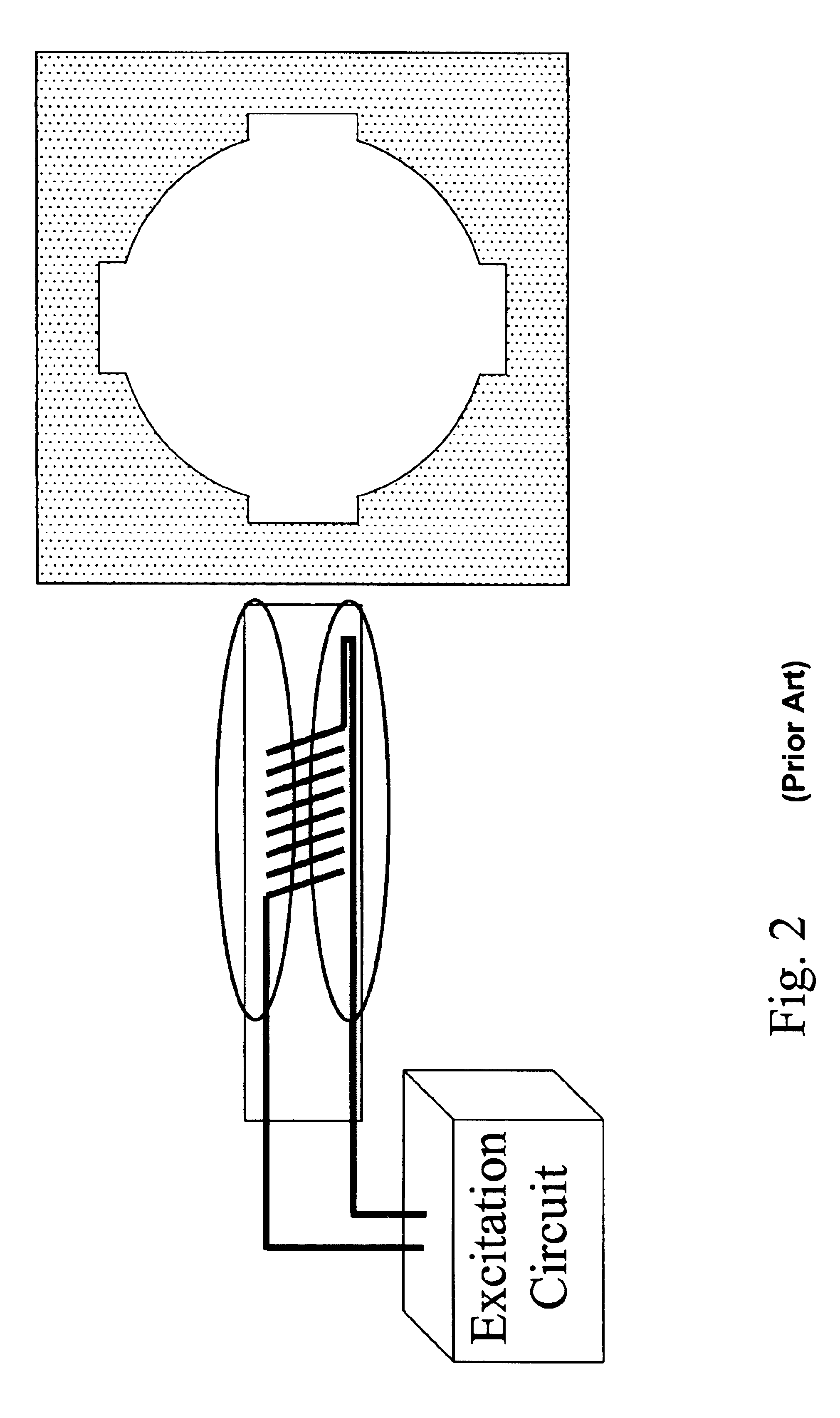Hybrid inductive sensor
a technology of inductive sensor and hybrid induction sensor, which is applied in the direction of instruments, devices using electric/magnetic means, and magnetic field measurement using permanent magnets. it can solve the problem of imposing a cost of 50 to 100 man-hours per fligh
- Summary
- Abstract
- Description
- Claims
- Application Information
AI Technical Summary
Benefits of technology
Problems solved by technology
Method used
Image
Examples
Embodiment Construction
[0030]Referring now to FIG. 4A and FIG. 8, in a currently preferred embodiment of the present disclosure, hybrid inductive sensor 10 includes excitation means 12, permanent magnet 14, pole piece 16, and sensor coil 18 for sensing target surface velocity and or proximity to target 20. Permanent magnet 14 may be any suitable material providing sufficient low frequency field strength such as a permanent magnet or a electromagnet. Pole piece 16 may be of any suitable permeable and / or conductive material exhibiting a low retained magnetization such as iron, steel, or nickel. Pole piece 16 may also be somewhat diamagnetic as a function of frequency.
[0031]There are numerous materials that appear diamagnetic when exposed to a changing magnetic field. Many conductive materials exhibit an apparent diamagnetism. The mechanism by which a changing magnetic field induces a voltage in a pickup coil is replicated to a lesser or greater degree in any solid conductive material such as a block of copp...
PUM
 Login to View More
Login to View More Abstract
Description
Claims
Application Information
 Login to View More
Login to View More - R&D
- Intellectual Property
- Life Sciences
- Materials
- Tech Scout
- Unparalleled Data Quality
- Higher Quality Content
- 60% Fewer Hallucinations
Browse by: Latest US Patents, China's latest patents, Technical Efficacy Thesaurus, Application Domain, Technology Topic, Popular Technical Reports.
© 2025 PatSnap. All rights reserved.Legal|Privacy policy|Modern Slavery Act Transparency Statement|Sitemap|About US| Contact US: help@patsnap.com



